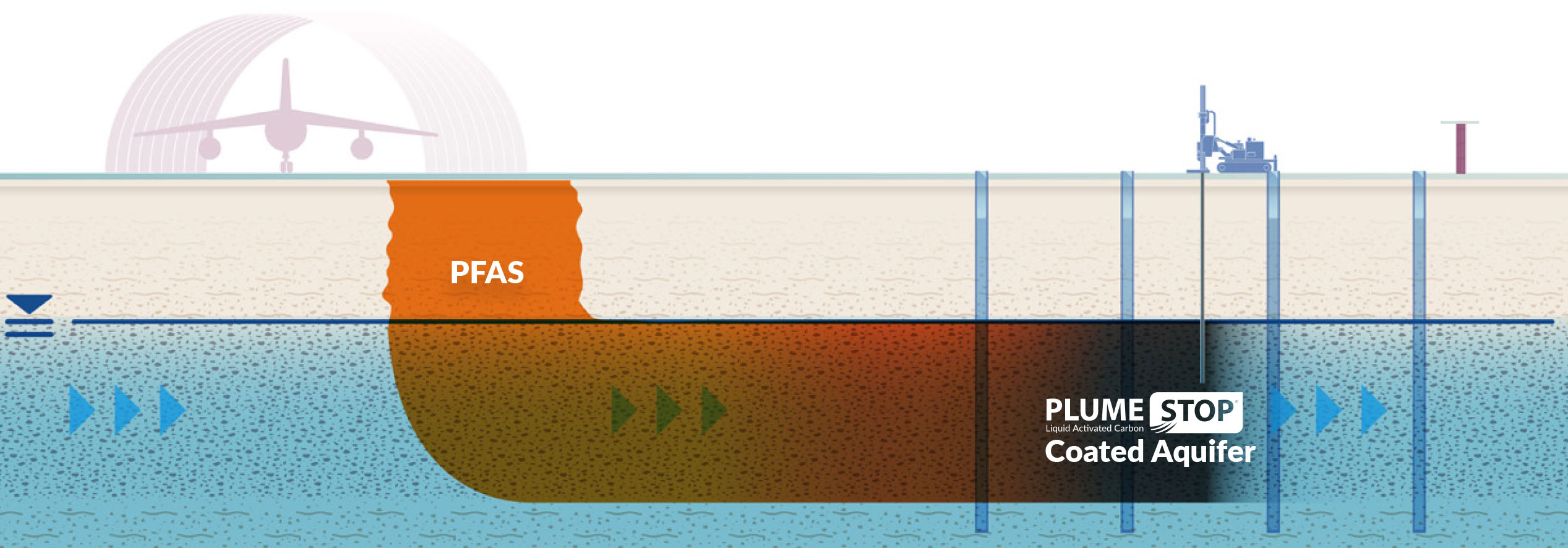Ingenious PFAS Therapy Solutions for Safer Water
The enhancing occurrence of PFAS contamination in water materials requires a critical examination of cutting-edge therapy services. Furthermore, arising bioremediation methods provide a more sustainable strategy to dealing with PFAS challenges. pfas management.
Introduction of PFAS Contamination
PFAS contamination has actually emerged as a significant environmental and public health problem. Per- and polyfluoroalkyl substances (PFAS) are a group of synthetic chemicals understood for their perseverance in the setting and body, leading them to be commonly referred to as "permanently chemicals." These substances have actually been widely used in numerous markets, consisting of firefighting foams, water-repellent materials, and food product packaging, largely due to their water- and grease-resistant buildings.
The extensive use PFAS has actually resulted in their detection in dirt, water supplies, and even in the blood of human beings and pets. Studies have actually connected PFAS direct exposure to numerous wellness problems, consisting of developing effects in babies, body immune system dysfunction, and numerous kinds of cancer cells. Furthermore, the ecological perseverance of these compounds complicates their destruction and elimination, raising problems concerning long-term eco-friendly influences.
Regulative bodies are significantly executing rigid standards to keep track of and minimize PFAS degrees in drinking water and other environmental tools. As awareness of PFAS contamination expands, it has actually come to be crucial for communities and sectors to seek reliable treatment solutions to alleviate exposure and guard public health and wellness.
Advanced Filtering Technologies
As the urgency to attend to PFAS contamination increases, advanced filtration innovations have actually emerged as a critical component in the remediation initiatives focused on eliminating these persistent chemicals from water sources. These modern technologies take advantage of innovative systems to properly target and capture PFAS substances, which are infamously immune to standard treatment techniques.
Among the most encouraging strategies is using granular turned on carbon (GAC), which adsorbs PFAS molecules because of its high surface and permeable framework. This approach has actually been extensively executed in both metropolitan and commercial setups, demonstrating considerable decreases in PFAS focus. Additionally, ion exchange resins have actually obtained traction, specifically created to uniquely bind PFAS ions from water, hence facilitating their removal.
Membrane filtering technologies, such as reverse osmosis and nanofiltration, additionally show efficacy in PFAS removal by physically dividing impurities from water - pfas management. These systems can achieve high levels of purity, making them ideal for drinking water applications
Chemical Therapy Advancements
Many chemical therapy innovations are being checked out to successfully resolve PFAS contamination in water supplies. One encouraging approach involves making use of advanced oxidation processes (AOPs), which make use of effective oxidants such as ozone, hydrogen peroxide, or chlorine dioxide integrated with UV light to break down PFAS substances right into much less unsafe materials. This technique has actually shown efficiency in research laboratory settings, revealing possible for scalability in real-world applications.
Another ingenious technique is the development of ion-exchange resins particularly developed to target PFAS. These resins can uniquely adsorb PFAS substances from water, allowing for their elimination throughout treatment procedures. Current innovations have actually improved the efficiency and ability of these materials, making them a favorable alternative for water therapy facilities.
In addition, researchers are exploring using chemical this hyperlink representatives like persulfate and ferrous ions to boost the deterioration of PFAS in contaminated water. These representatives can cause chemical reactions that facilitate the failure of consistent PFAS compounds.
Arising Bioremediation Techniques
Current innovations in chemical treatment technologies have paved the means for checking out bioremediation techniques as a sensible option for resolving PFAS contamination. Bioremediation takes advantage of the natural metabolic procedures of microorganisms to break down or transform contaminants, making it an appealing method for tackling relentless contaminants like PFAS.
Emerging strategies in bioremediation include making use of genetically engineered microbes that can specifically target and damage down PFAS compounds. These microbial pressures are being developed for their improved degradation capacities, raising the performance of the removal procedure. In addition, scientists are checking out the capacity of plant-assisted bioremediation, where particular plant species may uptake and withdraw PFAS from polluted soil and water.
An additional encouraging strategy is the application of bioaugmentation, which includes presenting valuable bacteria right into infected environments to increase the deterioration of PFAS. This approach can promote faster remediation timelines and enhance total effectiveness.

Governing Frameworks and Specifications
A thorough regulatory framework is important for efficiently handling PFAS contamination and making sure public health protection. The raising recognition of per- and polyfluoroalkyl materials (PFAS) as toxic wastes has actually triggered different federal and state companies to establish standards that control their existence in water materials. The U.S. Environmental Security Company (EPA) has actually developed wellness advisories and is functioning towards establishing enforceable limits for PFAS in alcohol consumption water.
State-level regulations vary significantly, with some states adopting more stringent guidelines than those best site recommended by the EPA. These guidelines often consist of optimum contaminant degrees (MCLs) for details PFAS substances, tracking demands, and reporting responsibilities for water utilities. Additionally, arising structures concentrate on the remediation try these out of polluted sites, stressing the demand for efficient treatment technologies.

Conclusion
Finally, the development and implementation of innovative PFAS therapy remedies are crucial for resolving the pervasive issue of water contamination. Advanced filtration technologies, chemical therapies, and emerging bioremediation strategies jointly provide a complex strategy to successfully decrease and deteriorate PFAS degrees. As regulative structures continue to evolve, incorporating these innovations will certainly be essential to guard public wellness and bring back the integrity of infected water sources, eventually contributing to a cleaner and much safer environment.